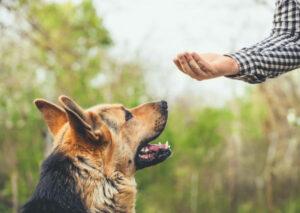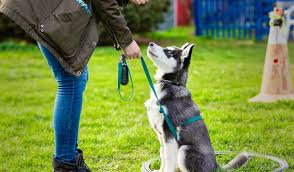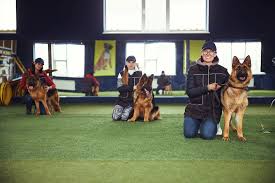I see obedience training as a foundational element of the relationship between a dog and its owner. It is more than just teaching commands; it’s an interactive process that strengthens the bond you share. A dog that learns to listen and adapt to its human’s expectations is typically happier and better integrated into the family unit. Training is not just about control; it’s about companionship and mutual respect.
Considering the connection between an owner and their dog during the training process is essential. By doing so, training becomes an inherently rewarding experience for both parties. The debate between aversive-based (discipline) and reward-based (incentivizing good behavior) training methods is ever-present. I believe, however, that the end goal should be prioritized: the development of a well-behaved, happy dog that regards its owner with love rather than fear.
Drawing from the information I found in an insightful article, the methods of training are varied. Aversive-based training employs techniques such as loud noises, physical corrections, and stern reprimands. In contrast, reward-based training focuses on providing treats, affection, or other positive reinforcements when the dog displays desired behavior. These two approaches fundamentally differ in the experiences they create for your dog, shaping how your companion perceives and interacts with you.
Deciphering Dog Psychology: How Your Furry Friend Learns
You may wonder why sometimes your dog seems to perfectly understand you, while at other times, it’s like they’re on a different wavelength. To get to the bottom of this, it’s vital to grasp how they learn. Dogs possess a level of intelligence that’s often compared to that of human two-year-olds. They respond to their immediate environment and the outcomes of their actions with a focus that’s both immediate and impressionable. This explains why the timing of rewards or corrections in training is crucial for them to make the right associations.
Understanding the canine learning process demands an appreciation for their perception of consequences. Dogs live in the moment, and when they do something that is followed by a pleasant result, they’re more likely to repeat that behavior. Conversely, if their action leads to something unpleasant, they’re less likely to do it again. This simplistic yet effective learning approach is the cornerstone of effective training methods.
Science recognizes three distinct types of dog intelligence: Instinctive, Adaptive, and Working and Obedience. Each type plays a role in how your dog interacts with the world. Instinctive intelligence relates to behaviors they are bred for, like herding or retrieving. Adaptive intelligence describes how well a dog learns from their surroundings to solve new problems. Working and obedience intelligence refers to their ability to learn from humans and perform tasks or follow commands.
Dogs are highly responsive to tones and can discern emotional cues in our voices, often more than the actual words spoken. If you’ve ever found your dog tilted their head at you when you speak, it’s a sign they’re trying to understand not just what you’re saying, but how you’re saying it. This sensitivity is why yelling is rarely effective. Instead, a firm, consistent tone gives them a clearer signal to follow.
Now, moving fluidly from the foundation of how dogs learn to applying this understanding in practice is where reward-based training shines. By focusing on the specific behaviors you wish to see, reward-based training avoids fear-based responses, inviting instead a harmonious rapport between you and your dog. Next, we’ll explore the nature of positive reinforcement and why your approach to rewards can make all the difference in your obedience training efforts.
Championing Positive Reinforcement: The Power of Reward-Based Training
When I talk about training dogs, I often highlight the effectiveness of reward-based methods. It’s a simple, yet powerful approach: you reinforce the behaviors you like to see by offering your dog something it loves in response. This could be treats, praise, belly rubs, or any action that brings your dog joy.
The science behind this is known as operant conditioning, where a dog learns to connect their actions with a consequence. In the realm of positive reinforcement, the consequence is always something pleasant. When your dog sits on command and receives a treat immediately after, it starts to associate sitting with rewards. This is what’s referred to as an ‘event sequence’.
Creating the right ‘event sequence’ is crucial. It’s all about timing. If the reward comes too late, your dog could be confused about which behavior you’re reinforcing. That’s why I stress the importance of immediate rewards. Deliver your dog’s treat, praise, or pat as soon as they perform the action you’re looking for.
Finding out what motivates your dog is key to success. Some dogs will do anything for a bit of food, while others might prefer a game of fetch or some cuddle time. I always advise to use the reward that your dog wants most, as it ensures the training is both enjoyable and effective for them.
But remember, not all rewards are created equal. The value of the reward must match the difficulty of the behavior. For instance, if your dog successfully navigates a complex command or overcomes a distracting environment to obey, you might offer a higher-value treat or extra playtime to recognize the effort.
Lastly, consistency is the cornerstone of successful reward-based training. It reminds me to be clear and consistent with commands and rewards. If you only reward the behavior sometimes, your dog might get mixed signals. It’s like telling a child they’ll only get dessert sometimes when they finish their vegetables – it’s not as motivating. So be consistent, and you’ll see the results in your dog’s behavior.
Managing Misbehavior: Effective Ways to Control Consequences
Training your dog is as much about discouraging bad behavior as it is about encouraging the good. When I talk about controlling consequences, I’m essentially discussing how to respond when your dog does something you don’t want it to do. In a reward-based training context, this often means withholding rewards to make it clear that certain actions are undesirable.
Consider this: Your dog jumps excitedly on guests entering your home. Not only can this be overwhelming for visitors, but it might also pose a risk to children and the elderly. To address this, I recommend a consistent response where the consequence for jumping is simple: no greeting, no attention.
Here’s what you can do. Keep a tempting treat in your hand but don’t react if your dog jumps up. If they leap at you, turn around, exit, and test their response again. Repetition is crucial. It’s about patience and not giving in until your dog remains calm when you enter. Only then do you reward them with the treat.
But it shouldn’t stop with you. Dogs are clever and can learn to discriminate between people. Ensure every family member and frequent visitor knows the drill. They should all respond uniformly so that your dog understands that jumping up on ANYONE won’t lead to the desired outcome.
The success of this approach hinges on consistency and timing. If you waver or reward your dog at the wrong moment, confusion sets in. They won’t be able to connect the dots between action and consequence. Stick to the plan, and you’ll see progress. I’ve used this approach with great success, and I trust it will work for you too.
Embracing a Training Philosophy: Reward vs. Aversive Methods
In the mosaic of dog training methodologies, the two that stand out in vivid contrast are reward-based and aversive-based training. My exploration in this area reveals that each technique carries its unique set of influences on a dog’s behavior and overall well-being.
When it comes to reward-based training, the emphasis is on reinforcing good behavior with treats, praise, or affection. Experts often advocate for this method as it establishes positive event sequences leading to a trustworthy bond between the dog and its owner, without instilling fear or anxiety.
Conversely, aversive-based training uses punishments or negative reinforcements to discourage unwanted behaviors. While some might argue its effectiveness, I must stress the potential this method has for causing long-lasting psychological harm to dogs, alongside the detrimental effect it might have on the human-dog relationship.

As a responsible dog owner, it’s incumbent upon you to consider not just the immediacy of results, but the overarching impact of your chosen training methodology. Reflect on your long-term goals for your canine companion; if you seek a rapport rooted in mutual respect and understanding, then reward-based training emerges as the clear front-runner.
In closing, the decision between reward and aversive training methods hinges upon more than just obedience; it’s a testament to the kind of relationship you envision with your dog. By pursuing a reward-based training approach, you’re not only choosing a path of kindness and empathy, but you’re also fostering an environment of trust and love that encourages your dog to flourish both in behavior and spirit.


Hello. I think the relationships between human and dog is such a beautiful relationship. Dog really is man’s best friend. I found the super interesting too. I’m just wondering in terms of treats what are the healthiest options that are the most affordable? I’d like to help my dog with nutrition at the same time. Thanks.
Thank you for the comments. I find the love and trust shown by your pets, especially dogs, amazing.
I am investigating treats and will include my findings or more details on the product in a future blog.
Kind regards Tim